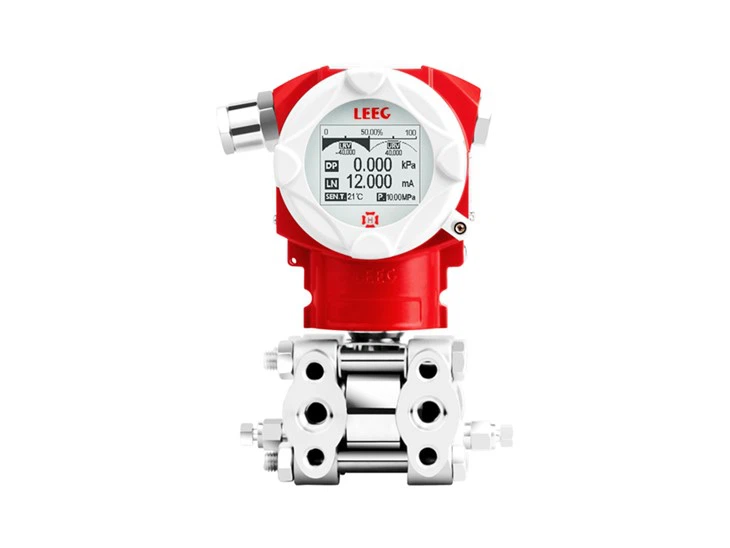In the overall structure of the MFE600-E electromagnetic flowmeter, although the housing, transmitter, circuit, and coils are all key components, the parts that directly contact the measured medium are mainly the "electrode materials" and the "liner materials."
The selection of these two components determines the instrument's corrosion resistance, wear resistance, long-term stability, maintenance frequency, and measurement reliability.
If material selection is inappropriate, even the best instruments may experience performance degradation in a short time.
In short, the instrument body is the platform - but the electrode and liner are the real keys to compatibility with your process.
1. Electrode Materials
* Function of the Electrodes
1. The electrodes are in direct contact with the conductive fluid and detect the induced electromotive force generated as the liquid flows through the magnetic field.
2. If the electrode material has poor corrosion or abrasion resistance, its surface may become damaged, leading to signal instability, zero drift, or long-term unreliability.
3. Therefore, the electrode material must not only be compatible with the medium but ideally one grade higher than the pipeline material to ensure durability.
* Common Electrode Materials and Application Scenarios
According to the MFE600-E product documentation, the electromagnetic flowmeter supports several electrode materials: 316L stainless steel, Titanium (Ti), Hastelloy HB/HC, Tantalum (Ta), Tungsten Carbide (WC), and Platinum (Pt)......
1. 316L Stainless Steel:
Suitable for general industrial water, municipal water, wastewater, and mildly corrosive acid or alkali solutions. Moderate in cost and performance.
2. Titanium (Ti):
Ideal for media containing chloride ions, such as seawater, brine, and chlorinated oxidizing liquids. Excellent resistance to chlorides; however, it is not suitable for strong reducing acids such as concentrated hydrochloric acid or hydrofluoric acid.
3. Hastelloy HC:
Performs well in more aggressive corrosive environments - such as mixed acids, strong oxidizing salts, or seawater with oxidizers.
4. Tantalum (Ta):
Excellent for extremely strong corrosion environments, such as concentrated hydrochloric acid, high-concentration sulfuric acid, chlorine gas, or high-temperature oxidizing conditions.
5. Tungsten Carbide (WC):
Recommended for fluids with a large amount of solid particles, sand, slurry, or other abrasive media - known for superior wear resistance.
6. Platinum (Pt):
Provides universal corrosion resistance against almost all strong acids and bases, suitable for extreme and harsh conditions. High in cost, usually reserved for critical applications.

* Electrode Selection Advice
When communicating with customers, always confirm:
1. Liquid composition and concentration
2. Temperature and pressure
3. Presence of chloride or oxidizing agents
4. Presence of solid particles or abrasives
5. Degree of corrosion and abrasion expected
2. Liner Material Selection
* Function of the Liner
1. The liner covers the inner wall of the measuring tube and is in direct contact with the liquid.
2. It protects the metal tube from corrosion and provides insulation, corrosion resistance, and wear protection.
3. If the liner material is not properly selected, it will directly affect the instrument's service life, measurement accuracy, and maintenance frequency.
Thus, the liner's material, thickness, temperature, and abrasion resistance level must match the medium conditions on site.
* Common Liner Materials and Characteristics
The MFE600-E electromagnetic flowmeter supports several liner materials, including Neoprene Rubber (CR), Natural Rubber (NR), Polyurethane (PU), PTFE, F46, PFA, and Ceramic.
Here's a summary of their main characteristics:
1. Natural Rubber (NR) / Neoprene Rubber (CR):
Suitable for general wastewater, water treatment, weakly corrosive liquids, and low-solid-content conditions.
Advantages: cost-effective, flexible, and easy to install.
Limitations: poor resistance to high temperatures and strong corrosion.
2. Polyurethane (PU):
Performs exceptionally well in abrasive environments containing solid particles, mud, or slurry, due to high wear resistance.
Not suitable for strong acids, alkalis, or high-temperature fluids.
3. PTFE (Polytetrafluoroethylene):
Offers extremely high chemical resistance - applicable to most strong acids, bases, and organic solvents.
Can withstand continuous operation at around 120°C and features a non-stick surface.
However, its wear resistance is lower than rubber, so abrasion should be considered for solid-laden media.
4. F46 (Modified Fluoroplastic):
Similar to PTFE but provides even higher temperature resistance, up to approximately 140°C.
Suitable for hygienic or food-grade applications.
5. PFA and Ceramic Liners:
Designed for extreme conditions.
Ceramic liners, typically made from 99.9% high-purity alumina, are ideal for high-temperature, high-pressure, and highly abrasive conditions, offering excellent durability and dimensional stability.

Proper material selection opens opportunities for value-added services - such as offering material upgrades, maintenance recommendations, and liner/electrode monitoring - helping create long-term service-based revenue
We take pride in what we build:
✅ First in China with ATEX intrinsic safety certification
✅ Accuracy up to 0.2%, world-class stability
✅ Four-electrode design, no grounding ring needed
✅ Fully in-house R&D and automated production, 60,000 units per year
Can be used into various working situation, please feel free to contact us for more deatails.






